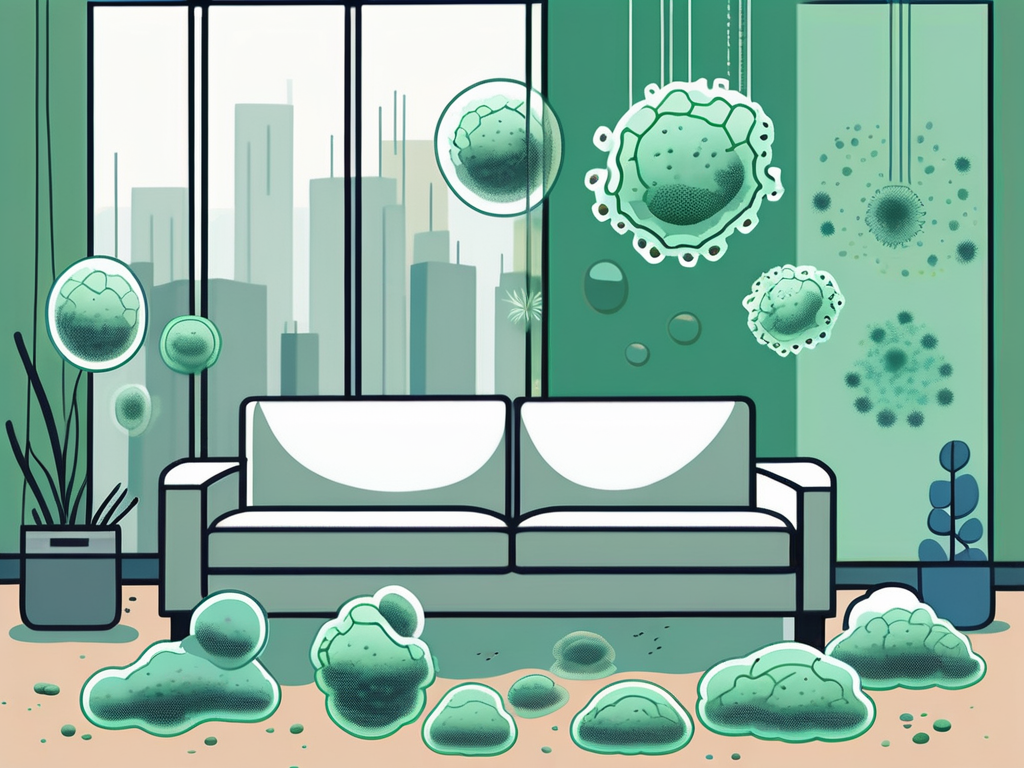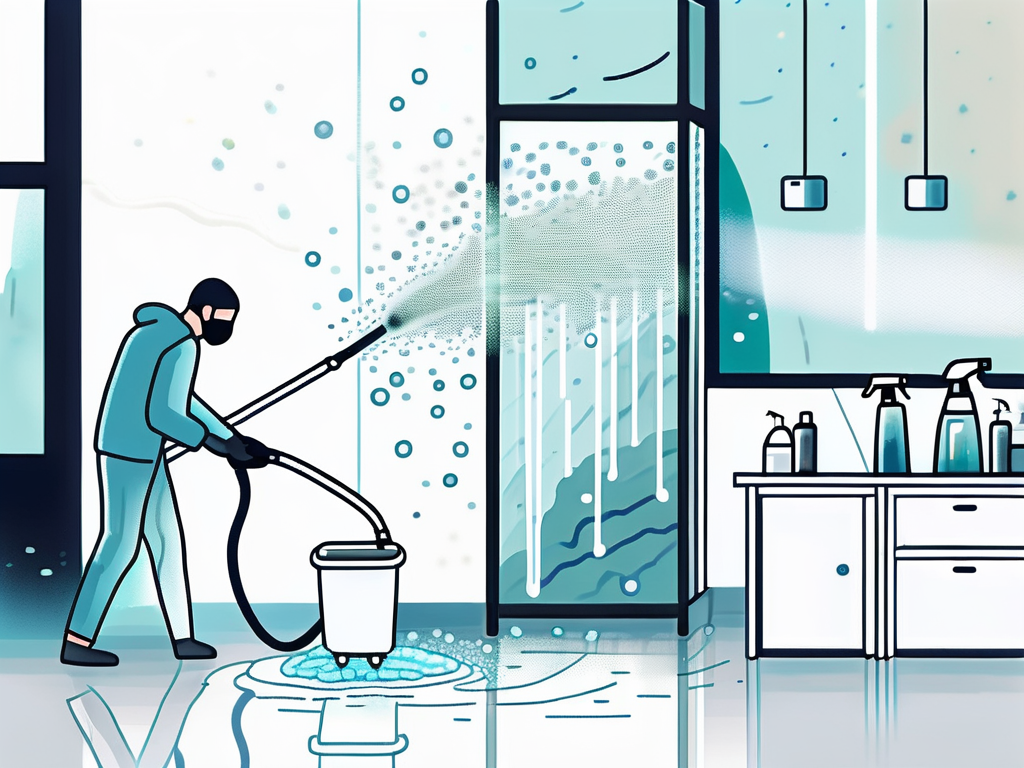Indoor air quality is a critical aspect of maintaining a healthy living and working environment. One of the key factors that can negatively impact indoor air quality is the presence of microbial contaminants. These microscopic organisms, which include bacteria, viruses, fungi, and mold, can proliferate in indoor environments under certain conditions and pose a range of health risks.
Understanding the nature of microbial contaminants, their sources, and how they can be controlled can help in maintaining optimal indoor air quality. This glossary article delves into the intricate details of microbial contaminants, explaining their characteristics, their impact on indoor air quality, and the measures that can be taken to mitigate their presence.
Understanding Microbial Contaminants
Microbial contaminants are tiny organisms that are often invisible to the naked eye. They are ubiquitous in nature and can be found in virtually all environments, including the air we breathe. These organisms can multiply rapidly under favorable conditions, leading to a significant increase in their concentration in the air.

While some microbial contaminants are harmless, others can cause a variety of health problems, ranging from mild allergic reactions to serious respiratory illnesses. The health impact of these contaminants largely depends on their type, concentration, and the duration of exposure.
Types of Microbial Contaminants
Microbial contaminants can be broadly classified into four main types: bacteria, viruses, fungi, and mold. Bacteria are single-celled organisms that can survive in a wide range of environments. Some bacteria are beneficial, but others can cause diseases such as tuberculosis and pneumonia.
Viruses are even smaller than bacteria and require a host organism to reproduce. They can cause a variety of illnesses, including the common cold, influenza, and more serious diseases such as COVID-19. Fungi, which include yeasts and molds, can produce spores that can be inhaled and cause allergic reactions or infections. Mold is a type of fungus that grows in damp environments and can produce allergenic or toxic compounds.
Sources of Microbial Contaminants
Microbial contaminants can originate from various sources both inside and outside the building. Indoor sources include humans, pets, plants, and any organic materials that can provide nutrients for these organisms. Activities such as cooking, cleaning, and even breathing can release microbial contaminants into the air.
Outdoor sources include soil, plants, and water bodies. These contaminants can enter buildings through open windows and doors, ventilation systems, and even on people’s clothing and shoes. Once inside, they can multiply under favorable conditions and contribute to poor indoor air quality.
Impact of Microbial Contaminants on Indoor Air Quality
Microbial contaminants can significantly degrade indoor air quality, especially when their concentration in the air is high. They can cause a variety of health problems, including allergic reactions, asthma attacks, respiratory infections, and in severe cases, life-threatening diseases such as Legionnaires’ disease and pneumonia.
The impact of these contaminants on health can vary depending on several factors, including the type and concentration of the contaminants, the duration of exposure, and the individual’s health status and susceptibility. People with weakened immune systems, such as the elderly, infants, and those with chronic illnesses, are particularly vulnerable to the adverse effects of microbial contaminants.
Health Effects of Microbial Contaminants
The health effects of microbial contaminants can range from mild to severe, depending on the type of contaminant and the individual’s susceptibility. Common symptoms include coughing, sneezing, watery eyes, nasal congestion, and skin rashes. In more severe cases, exposure to these contaminants can lead to asthma attacks, respiratory infections, and even life-threatening diseases such as pneumonia and Legionnaires’ disease.
Long-term exposure to high levels of microbial contaminants can also lead to chronic health conditions, such as chronic obstructive pulmonary disease (COPD) and hypersensitivity pneumonitis. It’s also worth noting that some microbial contaminants, such as certain types of mold, can produce toxic compounds known as mycotoxins, which can cause serious health effects, including neurological problems and cancer.
Indicators of Poor Indoor Air Quality
There are several indicators of poor indoor air quality that can suggest the presence of high levels of microbial contaminants. These include musty odors, visible mold growth, and excessive humidity. Health symptoms such as frequent respiratory infections, persistent cough, and worsening of asthma or allergy symptoms can also indicate poor indoor air quality.
It’s important to note that these indicators are not definitive proof of microbial contamination. A thorough investigation and testing are required to confirm the presence and identify the type of microbial contaminants. However, these indicators can serve as a useful guide in identifying potential issues with indoor air quality.
Controlling Microbial Contaminants
Controlling microbial contaminants in indoor environments involves a combination of strategies, including source control, ventilation, humidity control, and regular cleaning and maintenance. Implementing these strategies can help in reducing the concentration of these contaminants in the air and thereby improving indoor air quality.

It’s important to note that complete elimination of microbial contaminants is not feasible, given their ubiquitous nature. However, their levels can be significantly reduced to minimize their impact on health and indoor air quality.
Source Control
Source control is the most effective strategy for controlling microbial contaminants. This involves identifying and eliminating the sources of these contaminants or reducing their release into the air. For instance, regular cleaning can help in removing dust and organic materials that can serve as a nutrient source for these organisms.
Similarly, prompt repair of water leaks and proper disposal of garbage can prevent the growth of mold and other fungi. Personal hygiene practices, such as washing hands regularly and covering the mouth and nose when coughing or sneezing, can also help in reducing the release of bacteria and viruses into the air.
Ventilation
Proper ventilation can help in reducing the concentration of microbial contaminants in indoor air. This involves bringing in fresh outdoor air to dilute the indoor air pollutants and removing the polluted air. Ventilation can be achieved through natural means, such as opening windows and doors, or through mechanical means, such as using fans and ventilation systems.
It’s important to ensure that the ventilation systems are properly designed and maintained to prevent the introduction of outdoor microbial contaminants into the building. Regular cleaning and maintenance of these systems are also crucial in preventing the growth and spread of these contaminants within the building.
Humidity Control
Controlling indoor humidity is another important strategy in controlling microbial contaminants. Many of these organisms, particularly mold and fungi, thrive in damp conditions. Therefore, maintaining indoor humidity levels between 30% and 50% can help in inhibiting their growth.
This can be achieved through various means, such as using dehumidifiers, air conditioners, and exhaust fans, particularly in high-humidity areas such as bathrooms and kitchens. It’s also important to promptly repair any water leaks and ensure proper insulation to prevent condensation on cold surfaces.
Conclusion
Microbial contaminants can significantly impact indoor air quality and pose a range of health risks. Understanding their nature, sources, and the measures that can be taken to control them can help in maintaining a healthy indoor environment.

While complete elimination of these contaminants is not feasible, their levels can be significantly reduced through a combination of strategies, including source control, ventilation, humidity control, and regular cleaning and maintenance. By implementing these strategies, we can create indoor environments that are not only comfortable but also healthy.



